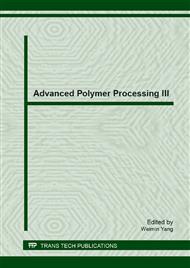p.635
p.640
p.646
p.652
p.657
p.663
p.667
p.672
p.677
Numerical Analysis for Thermal-Chemical-Stress Coupling in Deep Rock Creep Properties
Abstract:
The control equations for analyzing coupled thermal chemical-mechanical phenomena of deep rocks are established. Using creep equation by experimental data, 3D numerical simulation for creep properties of deep soft tunnel under coupling effect of temperature field, chemical field and stress field are conducted by ANSYS, and different effects of these fields on deep soft rock tunnel creep properties are analyzed, whats more time-creep curves of different temperature, pH value and stress deviation of the mid-point of the top of tunnel are obtained. Effect of these three fields on creep characteristics of deep soft rock cant be ignored. Under deep complex environment, high-stress is main factor of tunnel creep; creep increasing with temperature increasing. From simulation results, we get whether acidic environment or alkaline environment causes significantly stronger corrosive effect on the rock mass than the neutral environment, and increases its creep.
Info:
Periodical:
Pages:
657-662
Citation:
Online since:
July 2013
Authors:
Price:
Сopyright:
© 2013 Trans Tech Publications Ltd. All Rights Reserved
Share:
Citation:


